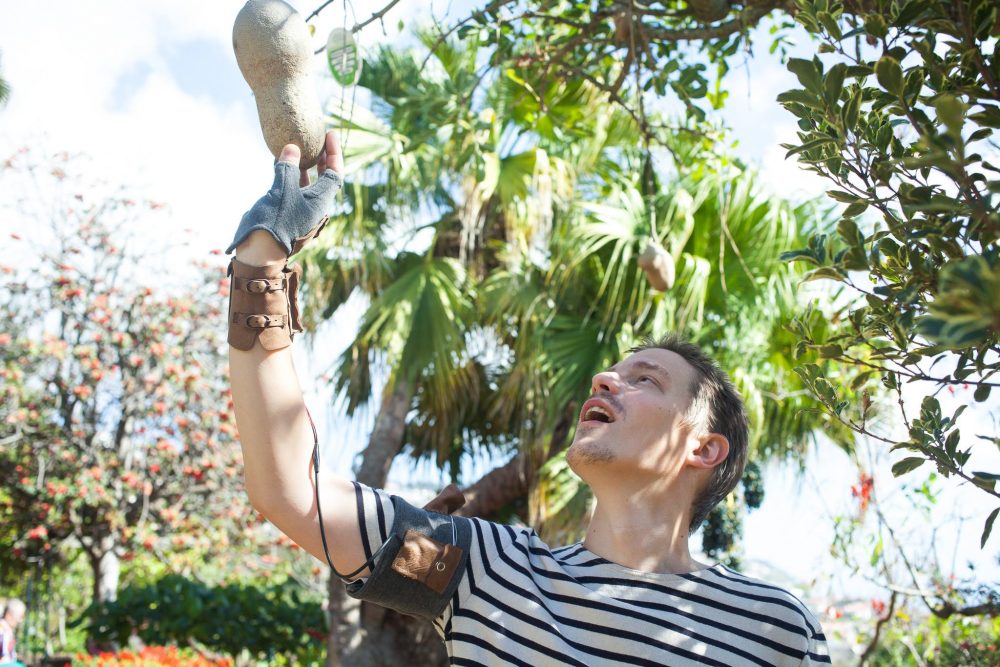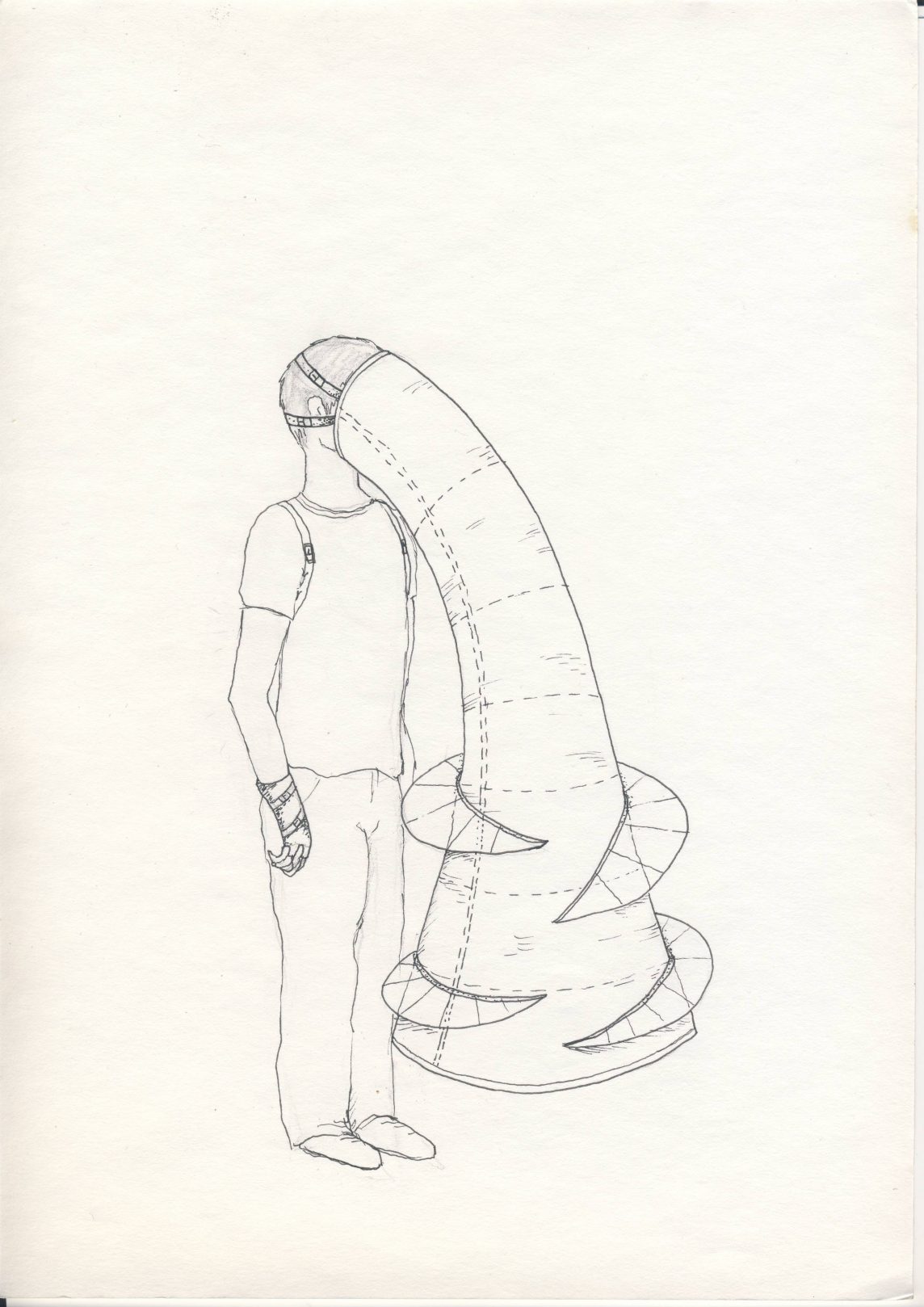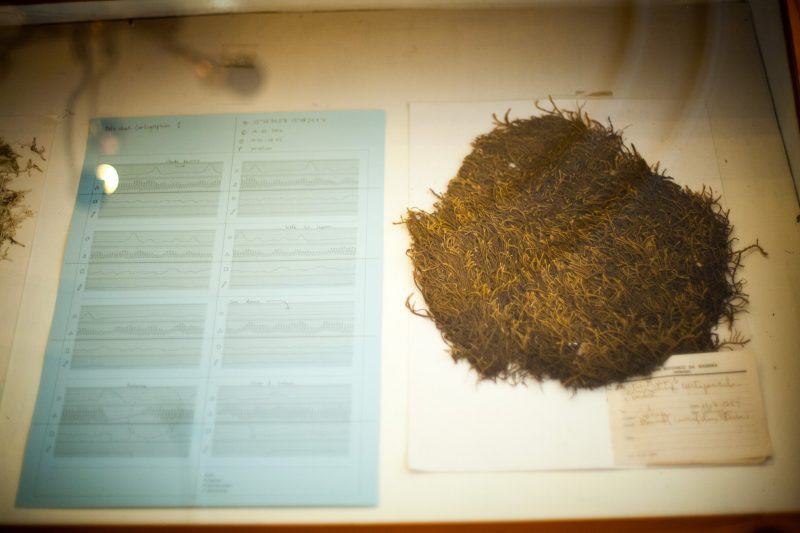
Sensory Cartographies is a collaboration between composer Jonathan Reus and artist-researcher Sissel Marie Tonn. The Sensory Cartographer seeks to explore extreme and information-rich environments; developing an understanding of these spaces through mediated forms of attention and mindfulness towards physiological, psychological and cognitive movements. We create wearable technologies and neuro-sensory attunement instruments that attempt to renegotiate techniques of cartography, collection, categorization and navigation originating the in colonial “golden age” of botany, drawing a line between these impulses to categorise nature to modern measurement and monitoring technologies. A living document of this work can be found at researchcatalogue.net.
Sensory Cartographies developed through conversations with Dutch anthropologist Judith van der Elst, whose work with geoinformatic technologies and indigenous cultures reveals the fact that spatial ontologies are not universal across the human population, while geoinformatics tends to reify a certain western perspective on space and time.
Sensory Cartographies, as such, is an ongoing research project conceiving of new instrumentalized mapping practices that take into consideration the constant flux of change paying out at the interface between mind-body and world. We are experimenting with the way mapping technologies determine the way we experience space. Informed also by research from cognitive and neuroscience, for example, in the phenomenon of ‘sensory gating’, whereby the body’s sensory system acts as a filter, singling out or amplifying events in a sea of impressions. From this point of departure we have developed prostheses/extensions and recording/playback devices that amplify or challenge the sensory system in this process of spatial and environmental dynamics.
1. Adaptation and Evolution

The environment around us present us with a sea of impressions and information: the wind touching our skin, the multitude of sights, odors and sounds that weave into a series of impressions of a place. The evolutionary developments of our species have created filtration mechanisms that automatically shape our perception of our particular umwelt. But the way we navigate space is not a universal parameter – culture, technology and diversity of minds also play a role in the ways in which we pay attention to our surroundings. The Sensory Cartographer critically and playfully explores the relationship between the technologies we use to navigate space, and the way in which conscious and pre-conscious mechanisms of the body, as well as the cultural contexts in which we use these technologies (in the broadest sense of the word) determine how we perceive environments.
2. Instrumentarium
Invention and instrumentation has played a role in spatial and temporal understanding throughout the human population; although these instrumentariums have by no means been homogenous or universal, depending on intimate perspectives of the lived experience of a place.
How can these instruments take into account the constant flux of change of our environments; to focus and direct attention as it is drawn from one impression to the next? We aim to create instrumentariums that challenge cultured modes of attention in a playful way, and propose alternative cartographic representations that implicate relationships between body and environment.
 3. Collection and Categorization
3. Collection and Categorization
The instruments we build, and the related practices for using them, are intended as a challenges to the human desire to collect, quantify and catalogue ‘nature’. Rather than seeing the human as a dominating force, our technological in(ter)ventions attempt to flatten hierarchies between the human, technological and natural. The questions we ask ourselves with this ongoing project is how do we gain a better understanding of our spatio-temporal perception of being in the world, how does that constitute how we act in the world, and how does it determine our survival?